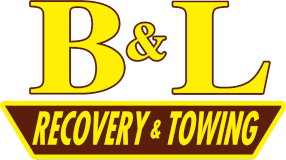When you find yourself in a towing or auto-hauling situation, understanding the difference between heavy duty and light duty towing can be the key to rescuing your stranded vehicle safely and efficiently. These two towing methods have distinct strengths and are tailored to specific types of vehicles and scenarios. In this article, we’ll delve into the world of heavy-duty and light-duty towing, highlighting their differences and helping you determine which one suits your needs best.
Heavy Duty Towing
Heavy duty towing is the go-to choice when dealing with vehicles or tow jobs that exceed a total weight of 17,000 pounds or 8.5 tons. This category includes large trucks and specialized equipment, such as semi-truck towing, bus towing, dump trucks, tractors, machinery, and trailers. Here’s what you need to know about heavy-duty towing:
Equipment: Heavy-duty tow trucks are equipped with powerful engines, robust winches, and specialized tools like 25-ton booms, winches, or wheel lifts to safely handle the immense weight of large vehicles.
Scenarios: Heavy-duty towing is essential for situations involving accidents with significant damage, off-road recoveries in challenging terrains, long-distance hauling of heavy loads, and extricating vehicles from tough spots like tall ditches or steep slopes.
Light Duty Towing
Light duty towing is designed for smaller vehicles, such as cars, small trucks, and mini SUVs. These tow trucks are versatile and ideal for handling a range of scenarios, including breakdowns and minor accidents. Here are the key points about light-duty towing:
Versatility: Light-duty tow trucks are well-suited for rescuing stranded vehicles due to engine failures, tire punctures, or minor accidents. They can efficiently tow cars and smaller vehicles without causing additional damage.
Accessibility: In hilly or mountainous terrains or situations where vehicles are stuck in ditches or along hillsides, light-duty towing is a practical choice for recovery.
Choosing the Right Towing Option
To determine whether heavy-duty or light-duty towing is right for your situation, consider the following factors:
Weight Capacity: Know the weight of your vehicle. While the general threshold is 17,000 pounds, local towing companies may have different specifications.
Towing Capacity: Consider the length of the tow and whether your vehicle is connected to a trailer or other components. Longer tows or additional weight may require heavy-duty towing.
Difficulty of Retrieval: Assess the accessibility of your stranded vehicle. If it’s in a hard-to-reach area, heavy-duty towing may be necessary.
Cost: Keep in mind that heavy-duty towing typically costs more due to its higher capacity and specialized equipment.
Remember that safety is paramount in any towing situation. Always inspect equipment, keep bystanders at a safe distance, and never exceed rated capacity. If in doubt, reach out to professional towing companies that follow strict safety protocols.
In conclusion, understanding the distinction between heavy-duty and light-duty towing is crucial for making the right choice when faced with a towing or recovery situation. By considering your vehicle’s weight, towing needs, accessibility, and budget, you can confidently select the towing option that best serves your needs while ensuring the safety of everyone involved.
